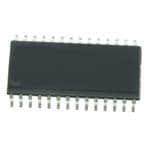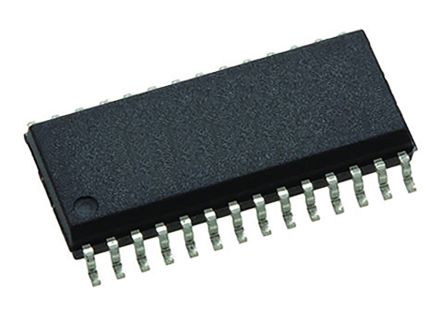PIC16LF18857-I/SO
8-bit microcontrollers with flash memory and versatile communication interfaces
Manufacturer: microchip
series introduction
# PIC16LF18857 - I/SO Product Series Introduction
## 1. Overview
The PIC16LF18857 - I/SO is a member of Microchip Technology's PIC16F188XX family of 8 - bit microcontrollers. These microcontrollers are designed to offer a balance of performance, low power consumption, and rich peripheral features, making them suitable for a wide range of applications. The "I/SO" in the part number indicates the specific package type, which in this case is a Small Outline (SO) package, providing a compact form - factor for space - constrained designs.
## 2. Key Features
### 2.1 Core and Memory
- **CPU Core**: It is based on the high - performance RISC (Reduced Instruction Set Computing) CPU core. This architecture allows for fast execution of instructions, with most instructions being executed in a single cycle. The core can operate at a maximum frequency of up to 32 MHz, enabling efficient processing of tasks.
- **Program Memory**: The PIC16LF18857 comes with 16 KB of Flash program memory. Flash memory is non - volatile, which means that the program code stored in it is retained even when the power is turned off. This allows for easy reprogramming during development and in - field updates if required.
- **Data Memory**: It has 368 bytes of RAM (Random Access Memory) for storing temporary data during program execution. This is sufficient for most applications to handle variables, buffers, and intermediate results.
### 2.2 Low - Power Operation
- **Low - Voltage Operation**: The device can operate at a wide range of supply voltages, typically from 1.8V to 5.5V. This wide voltage range makes it suitable for battery - powered applications, as it can adapt to different battery chemistries and states of charge.
- **Sleep Mode**: The PIC16LF18857 supports a sleep mode, where the microcontroller can enter a low - power state with minimal current consumption. In sleep mode, most of the internal circuits are turned off, and only essential functions such as the watchdog timer or an external interrupt can wake the device up. This feature is crucial for extending the battery life of portable and battery - operated devices.
### 2.3 Peripherals
#### 2.3.1 Analog Peripherals
- **Analog - to - Digital Converter (ADC)**: It is equipped with a 12 - bit ADC with up to 13 input channels. The ADC allows the microcontroller to convert analog signals from sensors (such as temperature sensors, light sensors, or pressure sensors) into digital values that can be processed by the CPU. The high - resolution 12 - bit conversion provides accurate measurement of analog signals.
- **Comparator Module**: The device has a built - in comparator module. Comparators can be used to compare two analog voltages and generate a digital output based on the comparison result. This is useful in applications such as over - voltage or under - voltage detection.
#### 2.3.2 Digital Peripherals
- **Universal Synchronous Asynchronous Receiver Transmitter (USART)**: The USART allows for serial communication with other devices, such as computers, sensors, or actuators. It supports both synchronous and asynchronous communication modes, making it compatible with a wide range of communication protocols.
- **Serial Peripheral Interface (SPI)**: The SPI interface enables high - speed serial communication between the microcontroller and other SPI - compatible devices, such as external memory chips or display drivers. It uses a master - slave architecture, where the PIC16LF18857 can act as either the master or the slave device.
- **Inter - Integrated Circuit (I²
Images for reference

Image Preview

Image Preview